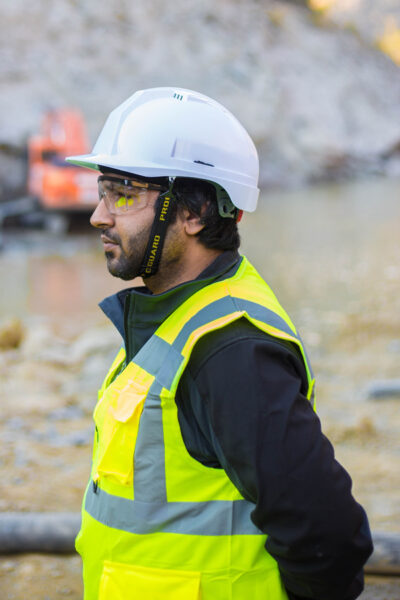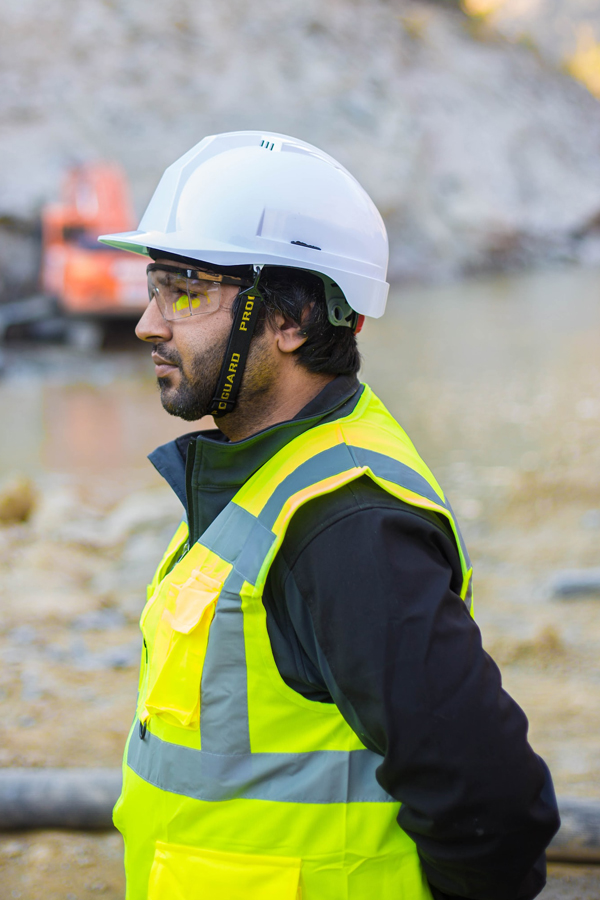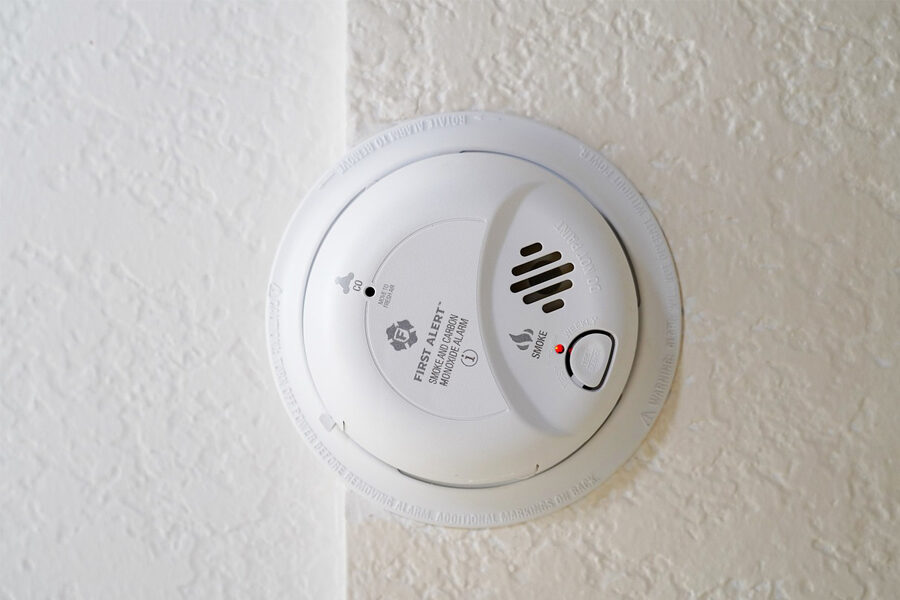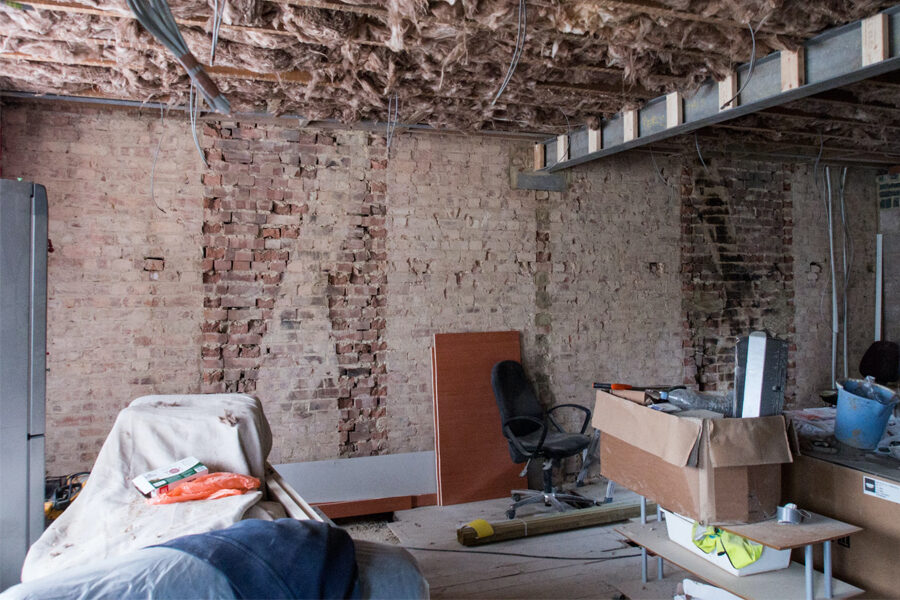
Safety glasses or protective glasses are an essential piece of personal protective equipment (PPE) . They protect your eyes from potential hazards in the workplace. Construction sites, manufacturing plants, and other high-risk environments frequently employ these glasses to safeguard against eye injuries. Protective glasses come in a variety of styles, including clear lenses, tinted lenses, and even prescription lenses. In this article, we will explore the different types of safety glasses available on the market, the benefits of using them, and the key factors to consider when choosing the right pair for your needs and many more. Whether you are a professional worker or a DIY enthusiast, understanding the importance of protective glasses and how to select the right pair will help ensure that you keep your eyes protected while on the job.
History of Safety Glasses
Safety glasses have a long and interesting history dating back to the early 20th century. Initially, safety glasses were simply regular eyeglasses with added side shields to shield the eyes from dust and debris.
In 1916, a man named Edward Mellor invented the first patented safety glasses. He designed safety glasses with a goggles-like design and a deep cup that covered the entire eye socket. The design intent was to shield the eyes from dust and flying particles.
In the 1920s, the American National Standards Institute (ANSI) began developing safety standards for industrial equipment, including eye protection. After that, in the 1930s, the first safety goggles with interchangeable lenses were invented. It allowed workers to change lenses based on the lighting conditions of their work environment.
As the years progressed, safety glasses and goggles continued to evolve, with new materials and designs that provided more protection and comfort. Today, safety glasses come in a wide variety of styles and designs. Moreover they are made from advanced materials like polycarbonate and polarized lenses, which can protect the eyes from impact, UV radiation, and glare.
Occupation and Industry Specific Use Cases that Use Safety Glasses
Eye guards are an essential piece of personal protective equipment in many different industries. Each industry has its own specific requirements for the types of safety glasses that are necessary.
Construction: In the construction industry, employees wear safety glasses to protect themselves from flying debris, dust, and other hazards that are present on construction sites. Moreover, construction safety glasses often have side shields or wrap-around frames to protect the eyes from the sides. They also may have anti-fog features to prevent the lens from steaming up in high-temperature environments.
Manufacturing: Manufacturing environments often have a variety of hazards that can damage the eyes. These include flying debris, chemicals, and intense light. Manufacturing typically uses safety glasses made from durable materials that can withstand impact and provide a high level of eye protection. Many manufacturing eye guards also come with polarized lenses to reduce glare and eye strain.
Laboratories: Workers in laboratories wear protective glasses to protect themselves from chemicals and other hazardous materials used in experiments and research. Safety glasses typically made of polycarbonate, a type of plastic that is highly resistant to chemicals and impact, are used in laboratories. They may also feature special coatings that can protect the eyes from UV radiation or other types of radiation.
Healthcare: Healthcare workers wear safety glasses to protect themselves from blood borne pathogens, bodily fluids, and other hazards that may come into contact with the eyes. These eye guards are typically clear, so that the worker can maintain a clear line of vision. They also have a tight fit to prevent any unwanted exposure of eyes with body fluids.
In conclusion, all these industries, protective glasses meet the safety standards and regulations as set by the relevant governing bodies.
Safety Glass Regulations and Compliance
Safety glass regulations and compliance are in place to ensure that workers are properly protected from hazards on the job. There are two key regulations that apply to safety glasses.
ANSI Z87.1: The American National Standards Institute develops a standard that establishes the minimum requirements for the design, testing, and labeling of safety glasses. In addition, the standard requires testing eye guards for impact resistance and penetration resistance and labeling them with information about the level of protection they provide. Protective glasses that meet the ANSI Z87.1 standard will have a label that says “Z87” or “Z87+”.
OSHA: The Occupational Safety and Health Administration (OSHA) has regulations that require employers to provide appropriate eye and face protection for their workers. According to OSHA regulations, employers must conduct a hazard assessment to determine what types of eye and face protection are necessary for their workers, and must provide the necessary protection at no cost to the employee.
Employers should ensure that the safety glasses they provide for their workers meet the appropriate standards and provide the necessary level of protection. Employers should train their employees on the proper use, cleaning, and maintenance of their eye guards. OSHA may impose fines or penalties on employers found to be in violation of safety regulations.
Different Types of Safety Glasses and Their Uses
There are many different types of safety glasses available, each designed to protect against specific types of hazards. Understanding the various types of protective glasses and their appropriate use can aid in keeping workers safe on the job.
Safety glasses with side shields
These glasses feature side shields that provide additional protection for the eyes. Construction and manufacturing environments, where the risk of flying debris or dust entering the eyes from the side is high, commonly use these glasses.
Goggles
Goggles are a type of safety glasses that fully enclose the eyes. They provide the highest level of protection against dust, chemicals, and other hazards. People typically wear them in environments with a high risk of exposure to hazardous materials. These may include places like laboratories and chemical plants.
Safety glasses with polarized lenses
These glasses feature polarized lenses that reduce glare and eye strain. They are common in outdoor environments where there is a high level of glare, such as welding, construction and in the aviation industry.
Prescription safety glasses
These protective glasses meet the vision needs of workers who require prescription glasses. They are available in many styles and designs. Moreover, they are made of durable materials to provide the necessary level of eye protection.
Safety glasses with electronic display
These are advanced safety glasses that integrate electronic displays such as heads-up displays on the lens. They come handy in specific industries such as aviation and construction, for better communication. In addition, for providing real-time information about their work environment.
Safety glasses with integrated audio
These glasses have built-in speakers or headphones. It allows workers to hear audio instructions or take calls without removing the glasses. They are mainly used in manufacturing, construction and healthcare sectors.
Advancement and New Tech of Safety Glasses
Recent years have seen many advancements and new technology being incorporated into safety glasses. This has made them more useful for workers in a diverse range of industries.
Electronic Display
Electronic display safety glasses have a small heads-up display (HUD) integrated into the lens, which can display real-time information such as instructions, maps, or telemetry data. These type of glasses are mainly used in the aviation and construction industry, where workers need access to real-time information while keeping their hands free.
Integrated Audio
Safety glasses with integrated audio have built-in speakers or headphones, which allow workers to hear audio instructions or take calls without removing the glasses. This feature can be especially useful in manufacturing and construction environments, where workers may need to communicate with team members or receive instructions while working with heavy machinery.
Augmented Reality
These types of glasses project a digital overlay of information onto the lens, allowing the wearer to access data, instructions, and communication with others, all while keeping their hands free. This technology has potential use in industries such as manufacturing, logistics, and repair and maintenance.
Smart Safety Glasses
Smart safety glasses are equipped with sensors and connected to a mobile app, which can track and monitor the wearer’s activity, location, and vital signs. These glasses can also be used for training purposes and in remote supervision.
UV protection
Some recent advancements in protective glasses technology have focused on providing better protection against UV radiation. Some eye guards now have advanced coatings or special lens materials that can block out nearly 100% of UV radiation, to prevent conditions such as cataracts and age-related macular degeneration.
How to Choose the Right Safety Glasses for You?
Selecting the right safety glasses can be challenging, as there are many different features and options to consider. So, here are some tips on how to choose eye guards that fit well and provide the appropriate level of protection for the task at hand:
Consider the hazards
The first step in selecting the right safety glasses is to consider the hazards that are present in the work environment. This will help determine what type of protection is necessary, such as impact resistance or UV protection.
Check for certification
Look for safety glasses that meet the appropriate safety standards, such as the ANSI Z87.1 standard or OSHA regulations. Eye guards that meet these standards have been tested and certified to provide the necessary level of protection.
Fit and comfort
Safety glasses should fit comfortably and securely on the face. They should not be too tight or too loose and should not cause any pressure points.
Lens material
Consider the lens material, as this will affect the level of protection provided by the glasses. Polycarbonate lenses are a good choice for safety glasses as they are lightweight, shatterproof and provide a high level of impact resistance.
Lens color
Lens color can also affect the level of protection provided by the glasses. Clear lenses are best for low-light conditions, while gray or amber lenses can reduce glare and improve visibility.
Additional features
Consider any additional features that might be beneficial for the task at hand, such as polarized lenses for outdoor work or side shields for protection from flying debris.
Personal preference
While choosing protective glasses, workers should also keep in mind their personal preferences. Such as frame style, lens size and color, they would be wearing them for long hours, they should be comfortable using them.
NoCry Clear Safety Glasses for Men and Women
The NoCry Safety Glasses provide superior protection for your eyes while also being built to last. These eye guards are ideal for work and play. They are perfect for;
- Woodworking and carpentry
- Metal and construction work
- Lab and dental work
- Shooting
- Cycling
- Racquetball
- Any other activity where you need to wear PPE eyewear
The glasses feature a strong and durable polycarbonate wraparound construction. It helps to keep your eyes safe from direct and peripheral threats. The glasses also protect your eyes from 90-100% of harmful UV radiation.
You can customize these protective glasses for ultimate fit and comfort. They have side and nose pieces that adjust to give you a perfect fit without slipping, no matter your face type or head size. The glasses are also fog, glare, and scratch resistant, which offers better visibility. The Vanguard Plus double coated lenses offer 5x more fog resistance, 2x more scratch resistance, and no optical distortion.
The NoCry Safety Glasses are backed by the NoCry Guarantee. This means that the brand stands behind every item they make. If there’s an issue with your glasses, NoCry will make it right by replacing them or giving your money back. With a limited lifetime protection and over 10 years of experience in providing premium customer support, you can trust in the quality and reliability of these protective glasses.
Maintaining and Caring for Safety Glasses
Proper care and maintenance are essential to ensure that safety glasses continue to provide the necessary level of protection. As a result, neglecting to care for and maintain protective glasses can lead to decreased protection, or even eye injuries.
Cleaning: Regularly clean these glasses to remove dirt, dust, and other debris that can accumulate on the lenses, use mild soap and water or lens cleaning solution and dry them with a soft, lint-free cloth. In addition, avoid using abrasive materials or solvents to clean the glasses, as these can scratch or damage the lenses.
Storage: Store safety glasses in a clean, dry place when not in use, do not leave in direct sunlight or exposed to high temperatures. This is because it can cause the lenses to warp or become damaged. It’s also important to keep eye guards in their protective case when not in use. The case will protect them from scratches and other damage.
Inspection: Regularly inspect these glasses for any signs of wear or damage, check for any cracks or scratches in the lenses and the frame for any signs of wear or damage. Replace glasses immediately if they have any damage.
Replace: Replace protective glasses when they no longer provide the necessary level of protection regardless of visible damage. Most eye guards manufacturers recommend replacing safety glasses every 1-2 years, depending on usage and environment.
Proper usage: These glasses should be worn properly and consistently whenever the worker is exposed to the hazards they were designed to protect against. Not using them correctly or not using them at all when they should be, can decrease their effectiveness and even lead to injuries.
Concussion
In conclusion, safety glasses are an essential piece of personal protective equipment that can help protect your eyes from potential hazards in many occupations like construction, electrical, carpentry, laboratories etc. They come in a variety of styles, including clear lenses, tinted lenses, and even prescription lenses, to fit different needs. Whether you are a professional worker or a DIY enthusiast, it is important to understand the importance of them and how to select the right pair to ensure that you keep your eyes safe while on the job. Overall, investing in a good pair of protective glasses can go a long way in protecting your vision and ensuring your safety on the job.




